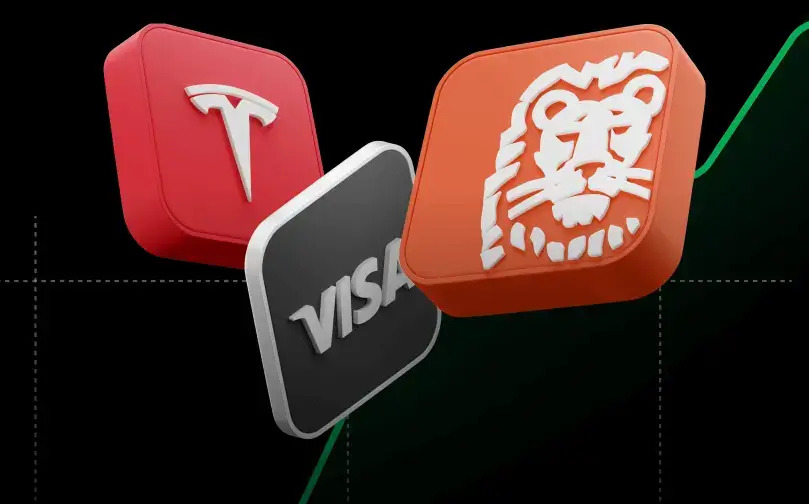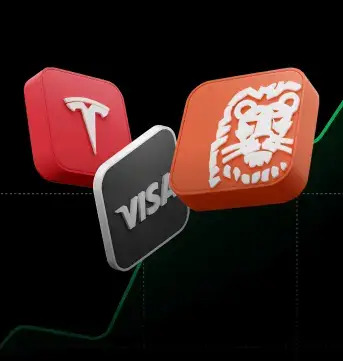One of the first decisions you’ll need to make as a trader when initiating your investment process is choosing a trading volume you can apply to your positions. The choice of trading volume will depend on many psychological factors such as emotional comfort and risk aversion, but the choice of trading volume will also be highly connected with the risk management that you plan to apply.
In this lesson you can learn:
- What margin is and its role in risk management
- The role of volume in trading and managing the risk
- How to calculate the value of a single pip
One of the first decisions you’ll need to make as a trader when beginning your trading journey is choosing a trading volume you can apply to your positions. It’s one thing to identify trends and spot trading opportunities. But how much money are you using for each position?
The choice of trading volume will depend on many psychological factors, such as emotional comfort and risk aversion, but the choice of trading volume will also be highly connected with the risk management that you plan to apply. In other words, understanding how the trading volume may affect you is crucial, because the volume you choose will determine both the margin per trade and pip value.
Margin per Trade
When opening a trade, you will need a certain amount of outlay. This is known as margin. The margin is not a cost, but is an amount of money that is frozen when you open a position and returned to you once the transaction has been closed. It's important to know what amount the margin will be so you can evaluate not only the risk itself, but also calculate whether the remaining funds will allow you to open additional positions.
Remember that with CFDs, you only need a fraction of the nominal value to be able to open a position. For example, with a leverage of 30:1 you’d only need 3.33% of the nominal value for the margin of the transaction. A typical leverage for FX is 1 to 30, which means that you’d only need 3.33% of the nominal value of the margin.
This allows you to potentially generate a higher return on the invested capital, but also makes the risk greater, meaning that you may need to deposit additional funds to cover your position. You will also suffer greater losses if the position moves against you.
Let’s say you’d like to open a 1 lot transaction on GBP/USD with leverage of 30:1, but you don’t know what the nominal value per lot is for this instrument. This information can be found in the instrument specification table.
![]()
On the GBP/USD, the nominal value per lot is £100,000. If the leverage is 30:1, you only need 3.33% for the margin of this trade, calculated in the base currency of the pair. Therefore, you need £3,333.33 for the margin of a 1 lot transaction.
From a risk management point of view, margin is very important and the general notion is that traders should not enter trades with a margin higher than 30% of the total invested capital.
Let's return to the above example. Let's say your initial capital is £5,000 and you would like to open a 1 lot transaction. In that case that would represent 66.67% of your total capital, because the required margin with a 30:1 leverage would be £3,333.33.
Pip Value
The second factor that the volume size will influence is the pip value. In the investment process, it's very important to know the pip value, especially for risk management purposes. You should know how your portfolio will be affected if the market goes 100 pips in your favour, or 100 pips against you.
In order to calculate the pip value, you can use the instrument specification table again.
![]()
In order to calculate the pip value per 1 lot, you need to multiply the 'Nominal Value of one lot' with the 'Size of one PIP' and the value will be in the quoted currency:
This means that if you opened a 1 lot transaction on the GBP/USD and the market moved 100 pips in your favour, you would make a profit of $1,000 (10 USD x 100 pips). On the other hand, if the market didn't move in your favour, you would generate a loss of $1,000. This calculation can help you evaluate on which market level your maximum accepted loss could be, and where you can possibly assign a Stop Loss order.
The general idea is that you should not risk more than 5% of your total capital in a position. The reason for this is that trading is based on probability and you should give your strategy a chance of assessment, to identify whether you have a bigger probability of achieving success rather than defeat.
You open a 1 lot transaction on GBP/USD with a pip value of £10. You will also follow the rule of not accepting a loss higher than 5% of your total capital. Therefore, your total capital is £5,000, so your maximum accepted loss is £250, which is approximately $380.
If you know that 1 pip is worth $10 and your maximum accepted loss adds up to $380, then by dividing $380 by 10, your maximum Stop Loss level is 38 pips.
Manage the Risk Properly
As shown above, both pip value and margin play an important role in trading. Choosing an optimal size of your trading position is a vital part of trading, as it can make it easier or harder to manage your position after a trade is opened.
What’s more, pip value and margin are also important from the risk point of view. If your trade is too big, a minor move can take you out. That is why you have to understand both of them in order to trade responsibly and potentially increase your chances of trading successfully.
This content has been created by XTB S.A. This service is provided by XTB S.A., with its registered office in Warsaw, at Prosta 67, 00-838 Warsaw, Poland, entered in the register of entrepreneurs of the National Court Register (Krajowy Rejestr Sądowy) conducted by District Court for the Capital City of Warsaw, XII Commercial Division of the National Court Register under KRS number 0000217580, REGON number 015803782 and Tax Identification Number (NIP) 527-24-43-955, with the fully paid up share capital in the amount of PLN 5.869.181,75. XTB S.A. conducts brokerage activities on the basis of the license granted by Polish Securities and Exchange Commission on 8th November 2005 No. DDM-M-4021-57-1/2005 and is supervised by Polish Supervision Authority.




